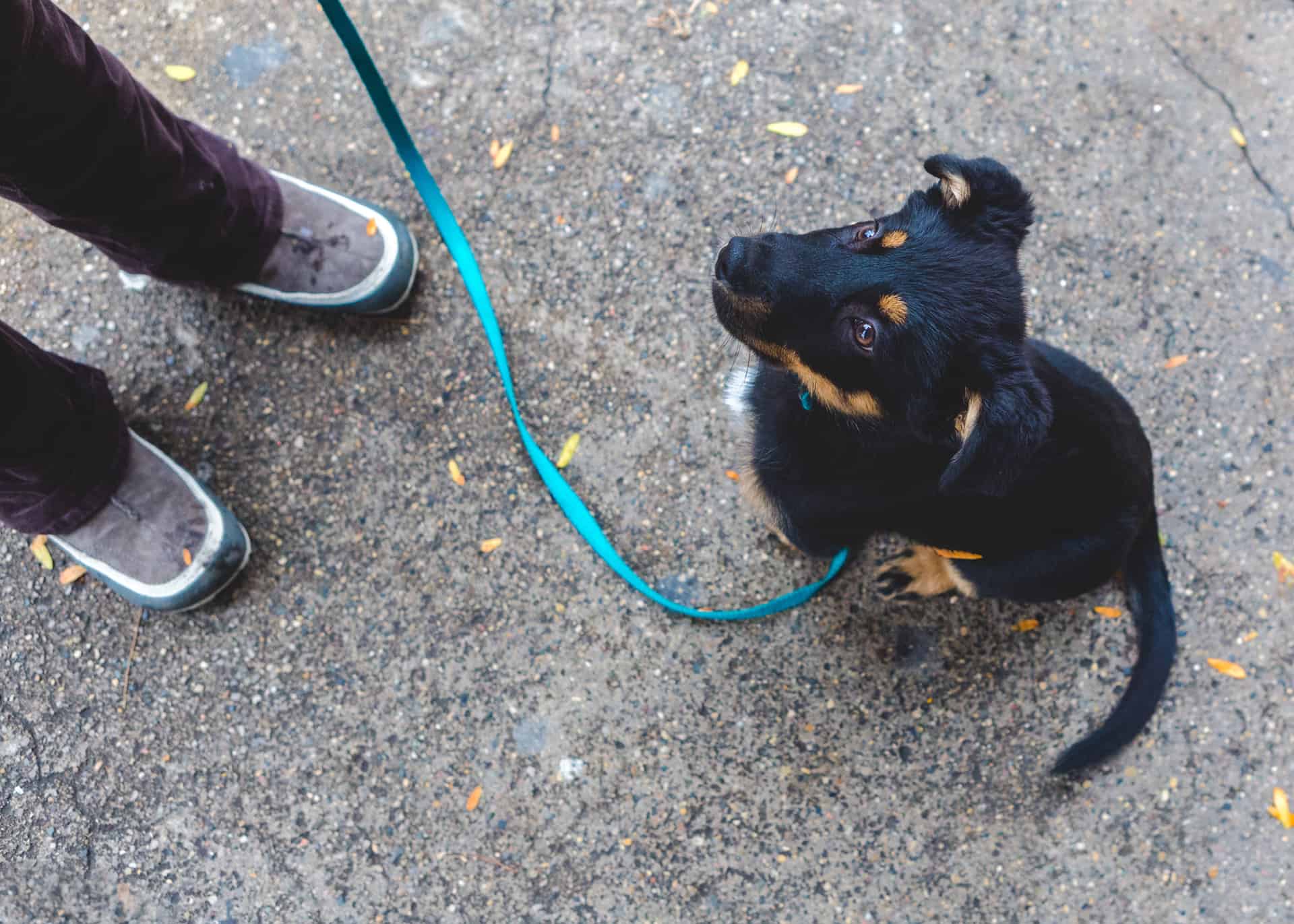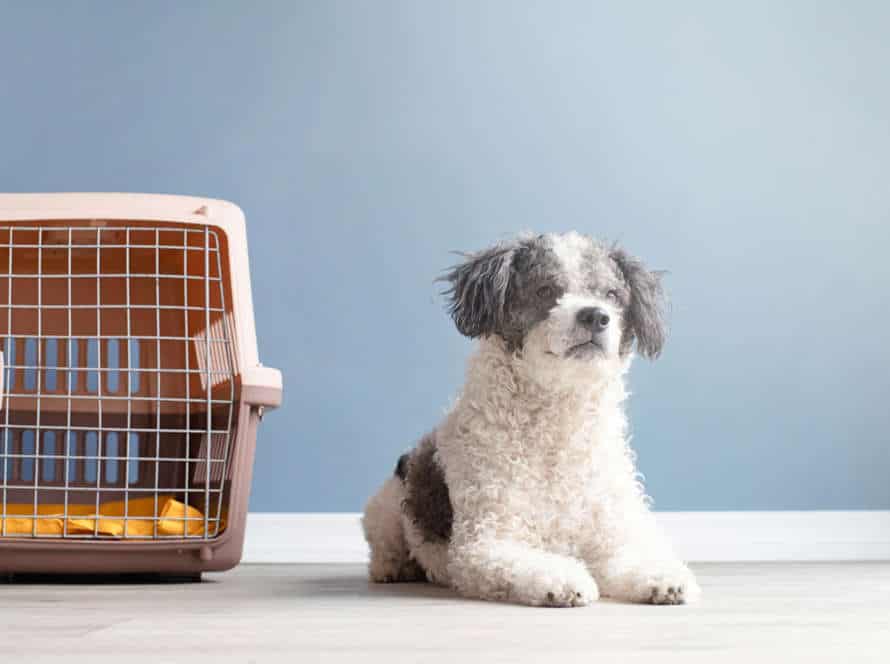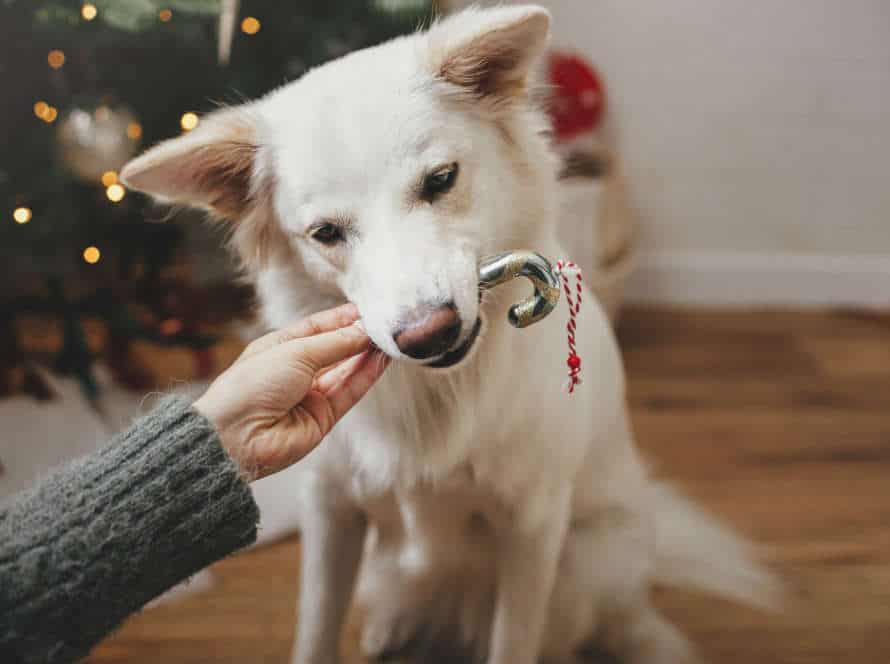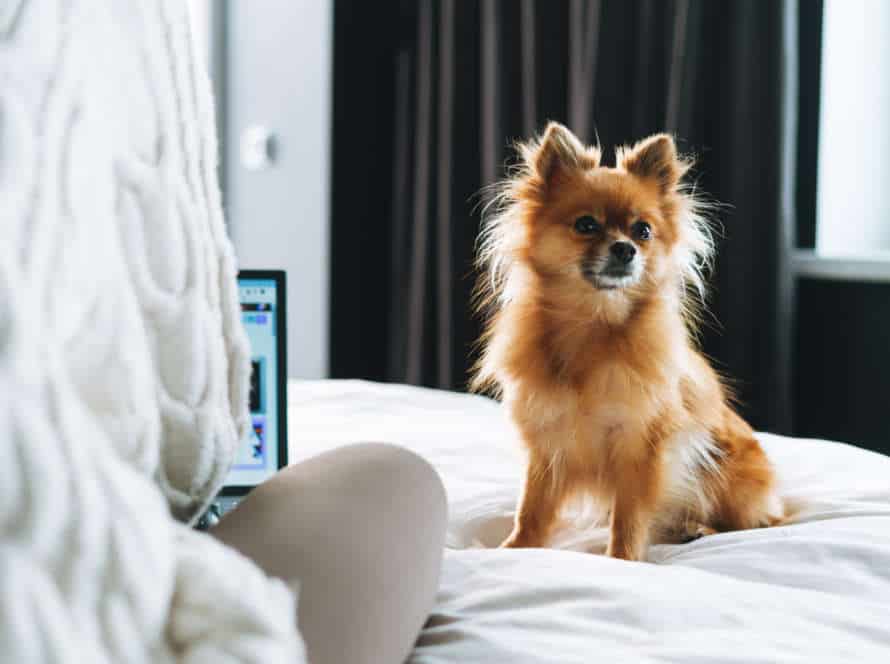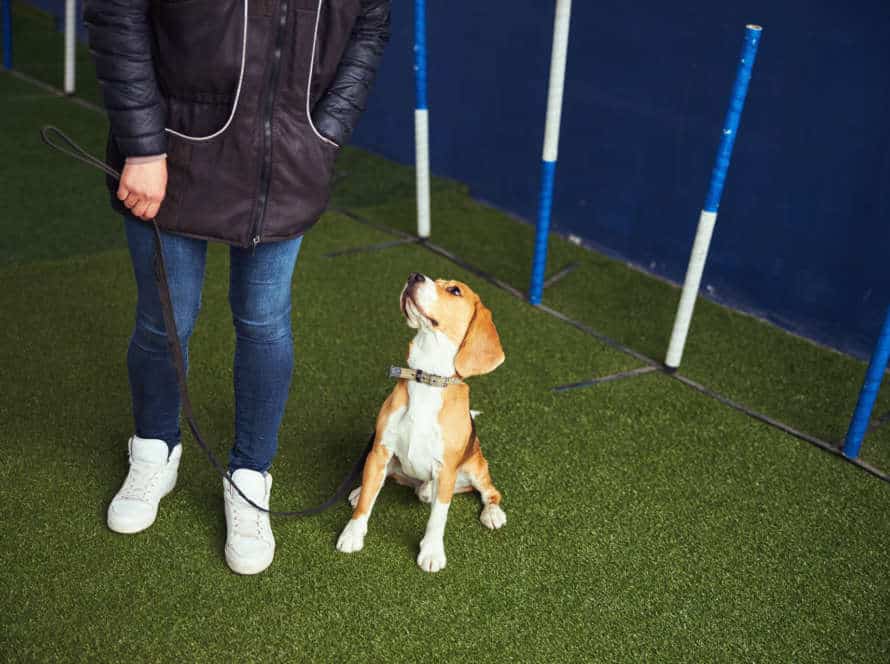How to Address Leash Reactivity: A Step-by-Step Guide
Leash reactivity is a common problem for dogs. To manage it, here’s a guide:
- Identify what triggers your pup’s reactivity when they’re on a leash.
- Use positive reinforcement training to make them used to the triggers.
- Counter-condition them to change their emotional response to the triggers.
- Manage the situation – go for walks during less busy times or avoid certain areas if needed.
- Exercise their mind and body in a controlled environment to help them release energy.
- Be patient, consistent and celebrate successes!
Addressing leash reactivity takes effort, but with the right attitude you can help your pup enjoy relaxed walks.
Understanding Leash Reactivity
Leash reactivity is a typical pet problem. It appears as barking, lunging, and growling when on a leash. To manage this, owners must first recognize what causes it. This guide offers steps to address leash reactivity in dogs. Comprehending the triggers is key. Plus, various methods can help manage the behavior.
What is Leash Reactivity?
Leash reactivity is a common behavior in dogs. It happens when a pup is over-excited, anxious or aggressive around people, other canines or anything they see as a threat while tied up. It is vital to understand leash reactivity to address it well and keep your pup safe on walks.
Here are some steps to help:
- Spot triggers and conditions that cause reactivity.
- Utilize positive reinforcement, like treats, toys and praise, to help your pup learn new behavior and gain confidence.
- Gradually desensitize your pup to their triggers in a secure environment.
- Employ good leash management, like using a solid and comfortable harness, a retractable leash, or a fixed-length leash.
- Consistency and patience are absolutely essential. Always reward good behavior and get professional help if needed.
Why do dogs become Leash Reactive?
Dogs can become leash reactive for various causes, like fear, anxiousness, lack of socialization, or past trauma. Leash reactivity is when a dog acts aggressive or overly excited while being walked with a leash. It’s important to pinpoint the source of leash reactivity in order to address it in the right way. Here is a step-by-step guide:
- Figure out the triggers: Note your dog’s behavior and find out what situations provoke their reactive behavior while on a leash.
- Reward good behavior: Treat your dog with treats and praise when they show desirable behavior, such as being focused and calm.
- Training exercises: Train your dog with activities that help them focus and stay peaceful in stressful scenarios.
- Avoid punishment: Don’t punish your dog for leash reactivity. Instead, work on changing their behavior with positive reinforcement.
- Professional help: Get a professional dog trainer or behaviorist to solve any underlying emotional or behavioral issues.
Signs of Leash Reactivity
Leash reactivity in dogs is a common issue. Pet owners don’t always understand it. Here are a few signs and behaviors to watch out for:
- Barking or growling when on a leash near other dogs or people.
- Lunging or pulling towards them.
- Excessive excitement or hyperactivity.
- Aggression.
- Constantly sniffing or marking territory.
Solving leash reactivity needs patience, understanding, and consistency. Desensitize your dog to triggers. Reward good behavior. If needed, seek help from a professional.
Pro Tip: Leash reactivity can be solved! With regular work, your dog can learn to walk calmly and enjoy walks.
Prevention
Preventing leash reactivity is key. Recognize the signs! Taking proactive steps is important to correct the behavior before it becomes an issue. Here are strategies and tips for prevention.
Socialization and Training
Leash reactivity in dogs is a common problem that can cause stress for both them and you. Socializing and training are the keys to helping your pup feel safe and secure during walks. Here’s a guide to dealing with leash reactivity:
- Get to know what triggers your dog and recognize their body language.
- Train them to do a different behavior, such as “watch me,” with positive reinforcement.
- Practice the new behavior in low-stress places before taking it to high-stress ones.
- Increase the difficulty of the scenarios in a gradual way, and reward them when they stay calm.
- Get tools like a front-clip harness or head halter to help manage their behavior while training.
- Remain patient and calm throughout the process, avoiding punishment or negative reinforcement.
By spending time on socialization and training, and dealing with leash reactivity with positivity and consistency, you and your furry friend can have peaceful and fun walks together.
Early Identification of Triggers
Leash reactivity is a common issue in dogs. It can stop a pet owner and their pup from enjoying walks. Early detection of triggers is key to prevent this behavior. Triggers can vary from people to other animals, or even loud noises. To identify them:
- Observe your dog’s behavior while walking. Look for signs like lowered ears, tail wagging, or fur standing up.
- Keep a journal to record observations. You may notice recurring triggers.
- Desensitize your dog by exposing them to the trigger from a safe distance. Use positive reinforcement training.
- Take it slow and consult a certified dog trainer if needed.
Pro tip: Identifying triggers early and addressing it with patience, training, and consistency can help keep leash reactivity away! Enjoyable walks are guaranteed for both you and your pup.
Provide Sufficient Exercise
To tackle leash reactivity in your dog, exercising is key. Dogs who don’t get enough exercise can become restless, anxious, and show more reactive behaviour on walks. Here’s how to make sure your pup is getting enough exercise:
- Make a schedule for daily walks with diverse speeds and terrains.
- Play games with your dog like fetch or tug-of-war.
- Sign-up for obedience or agility training classes for extra exercise and mental stimulation.
- Give interactive toys and puzzles to your dog for fun and exercise.
Remember, a tired dog is a happy dog. With enough physical activity, your dog will have less energy and be more relaxed during walks. This will reduce any chance of leash reactivity.
Management
Do you have a dog with leash reactivity? Don’t worry, management techniques can help! Firstly, set up the environment to avoid overstimulation. Secondly, teach your pup alternate behaviors that don’t involve reacting. Lastly, teach yourself what you can do to keep your pup calm and focused. Let’s dive deeper into each of these components and create an effective plan.
- Set up the environment to avoid overstimulation
- Avoid areas with lots of dogs or people
- Keep a safe distance from triggers
- Try walking during quieter times of the day
- Teach your pup alternate behaviors that don’t involve reacting
- Teach basic commands like “sit” and “stay”
- Practice focus exercises to keep your dog’s attention on you
- Try using positive reinforcement techniques for good behavior
- Teach yourself what you can do to keep your pup calm and focused
- Be aware of your own body language and energy
- Use a calm and reassuring tone of voice
- Stay relaxed and patient, even if your dog reacts
Reduce Exposure to Triggers
Leash reactivity in dogs is a common issue that can cause stress for both the dog and their owner. To manage this behavior, reduce your dog’s exposure to triggers. Here are some tips:
- Avoid areas with known triggers. If your dog gets reactive around other dogs, find an area with fewer dogs.
- Use a longer leash. Give your dog more space and reduce their feeling of being restrained. A 6-foot leash is best.
- Remove visual triggers. Dogs can react to what they see, hear, or smell. Walk your dog on a route that avoids engaging other dogs or smells that could trigger them.
These tips will help manage leash reactivity. Each dog’s behavior is unique, so find what helps your pet feel comfortable while on a leash.
Keep Your Dog Focused on You
Leash reactivity is a challenge for many pup owners when taking their doggo for a stroll. To keep your pup focused on you when out walking, here’s what to do:
- Be aware and anticipate any triggers that may cause your pup to react. These triggers may be other dogs, joggers, or loud noises.
- When you encounter a trigger, call your pup’s name right away. As a reward, offer treats or praise.
- Keep the leash short, and walk your pup in a calm and controlled way. This will stop them from lunging or pulling towards the trigger.
- Use positive reinforcement techniques to get your pup to link triggers with happy experiences.
- Consistency is essential! Keep practising these steps regularly to reinforce good behaviours and aid your pup in staying focused on you during walks.
Pro Tip: Remain cool and patient while training your pup. Consistency and positive reinforcement are the key to addressing leash reactivity.
Use Calming Pet Treats or Supplements
Calming pet treats or supplements can help manage leash reactivity in dogs. This is a common behavioural issue.
Treats and supplements with natural ingredients like chamomile, valerian root, and passionflower can calm the dog’s nervous system and prevent overstimulation.
Consult your vet to identify the right product.
Choose products with natural and safe ingredients.
Follow the dosage instructions on the packaging.
Combine these with positive reinforcement training and desensitization for effective leash reactivity management.
Training to Address Leash Reactivity
Leash reactivity in dogs is common. But, it can be fixed! To do this, you need to use training steps and activities. Here are some of them to help address leash reactivity in your pup.
- Take your dog on walks in quiet areas, away from other people and dogs.
- Reward your dog with treats when they stay calm.
- Teach your pup commands such as “sit” and “stay” to help them stay focused.
- Increase your pup’s exercise levels, as this can help reduce their stress.
- Use calming aids such as pheromone sprays or diffusers, or music therapy to help relax them.
- Practice desensitization techniques to help them get used to the stimuli that triggers the reactivity.
Counter Conditioning Techniques
Counter conditioning is a positive way to tackle leash reactivity in dogs. It changes their emotions towards something that usually causes a reaction. Here are some techniques to try:
- “Look at That”: Teach the “Look at That” command. When the trigger appears, say it and give a high-value treat. Increase the time between trigger and reward as your dog progresses.
- “Engage-Disengage”: Reward your dog for turning away from the trigger. Say “yes” or “good” when you see the trigger and give a treat when your dog looks at you.
- “Relaxation Training”: Train your dog to relax on command. Teach them to lay down and settle. Practice in different places to boost their confidence.
- “Gradual Exposure”: In a controlled environment, start from a distance that your dog feels comfortable with. Gradually decrease the distance as your dog gets used to the trigger.
Remember, counter conditioning needs patience and consistency. Don’t punish your dog for reacting and always use positive reinforcement.
Positive Reinforcement Training
Positive reinforcement training is a great way to deal with leash reactivity in dogs. This means when a dog barks or lunges while on a leash, usually due to other dogs, people, or objects. Here’s a guide on how to use positive reinforcement to manage leash reactivity:
- Work out what triggers the reaction in your dog.
- Give your pup high-value treats when they show calm behavior and a positive response to the trigger.
- Step by step, reduce the distance between your dog and the trigger. Keep rewarding them with treats for good behavior.
- Practice in a controlled environment often to help your pup’s behavior and reduce their reactivity.
Using positive reinforcement can be really helpful to manage leash reactivity without using punishment or negative techniques.
Desensitization Training
Desensitization training can be a good way to manage leash reactivity in dogs. This involves showing your pet the trigger of their reactivity in a safe, step-by-step way, with the goal of lowering their response over time. Here are the steps:
- Identify your dog’s triggers.
- Present the trigger from a secure distance, and reward them with treats or compliments for being calm.
- Decrease the distance between your dog and the trigger over several sessions, still rewarding peaceful behavior.
- If your dog reacts badly at any point, go back to a greater distance.
- Repeat the process in multiple training sessions until your dog is used to the trigger.
Always use positive reinforcement and avoid punishing during desensitization training. It may take time and patience, but with consistency, this can help with leash reactivity in dogs.
Tools to Help Address Leash Reactivity
When managing leash reactivity, it’s key to take the right steps. The right tools can make a huge difference. In this article, let’s explore some tools that can assist with leash reactivity. These tools can give you the best chance of success.
Standard or No-Pull Harness
A no-pull harness can help manage leash reactivity in dogs. But it isn’t the perfect fix. Here’s how to decide which type to use:
- Standard: If fear or anxiety cause leash reactivity, this harness offers security and comfort.
- No-pull: This type of harness spreads pressure and reduces chance of injury when your dog pulls on the leash.
Remember, a harness is just one element of an entire plan to help your pup feel confident on walks. Training and behavior change are also important.
Head Collar
A head collar or head halter is a useful tool for leash reactivity in dogs. It controls the dog’s head gently and encourages it to focus on the handler.
Here’s how to use it:
- Introduce the head collar slowly, let the dog sniff and explore it.
- Treats and positive reinforcement will help the dog get used to the head collar.
- Make sure it fits the dog’s head properly – not too tight, not too loose.
- Always use a leash with the head collar. Keep a safe distance from potential triggers to avoid overwhelming the dog.
- Gently, but firmly, pull the dog’s attention back to you if it starts pulling or lunging.
With consistent practice, the head collar can help improve behavior and reduce leash reactivity.
Muzzle
A muzzle can be a great help with leash reactivity in dogs. It is essential to prevent injuries to other dogs or people when training and modifying behavior.
Here are the steps for using a muzzle:
- Introduce it in a positive way, with treats and rewards.
- Start with short periods and increase the time the dog wears it.
- Monitor the dog to make sure the muzzle fits and isn’t causing discomfort.
- Work with a pro dog trainer or behaviorist to modify leash reactivity while wearing the muzzle.
When to Consult a Professional
Consulting a Certified Professional Dog Trainer (CPDT) is recommended if you experience serious leash reactivity with your pup. A CPDT can evaluate your dog and provide customized tips and advice. They can also mentor you on using the right tools and strategies during coaching. Consulting a professional is the best way to guarantee your pup has an enjoyable experience when out walking.
Sudden Onset of Leash Reactivity
Sudden, aggressive or fearful behavior when on a leash could be due to an underlying health condition, anxiety or changes in the environment. It’s best to get help from a professional dog trainer or behaviorist. To address leash reactivity in dogs, here are some steps:
- Identify triggers.
- Reward calm behaviour with treats or a toy.
- Teach basic commands, like “sit” and “stay”, to help them focus.
- Introduce triggers in a controlled manner.
- Avoid punishment or physical force – this could make the situation worse.
- If you’re unable to handle it, get help from a professional.
Aggression Toward Other Dogs or People
Aggression towards people or pooches is a big deal. It’s best to get help from a pro trainer or behaviorist. They can discover the cause and make a safe plan.
Here’s what to do with leash reactivity:
- Find out what sets off your pup.
- Increase the space between your pup and the trigger, rewarding when they’re calm.
- Use positive reinforcement to teach good behaviors instead of aggressive ones.
- Stick to the plan and never punish.
Remember, aggression is complex. Don’t be afraid to get help from a certified trainer or behaviorist.
Increased Frequency or Intensity of Leash Reactivity.
If you spot your pup’s leash reactivity rising, it’s time to chat to an expert and work through a step-by-step process. Here are some things to keep an eye out for:
- Aggressive lunging, barking, or growling when on a leash – especially around other dogs or people.
- Difficulty in control or anxiousness when on a leash.
- Behaviour that was once okay but is now more frequent or intense.
To tackle leash reactivity, try these steps:
- Do obedience training with your pup to build respect and trust.
- Gently desensitize your pup to triggers that cause reactivity.
- Keep your pup away from other dogs or humans.
- Utilize positive reinforcement to reward good behaviour.
- Consult a professional trainer or behaviourist if need be.
Remember, leash reactivity can be a safety concern and affect your pup’s quality of life, so it’s good to address it.
Frequently Asked Questions
Q: What is leash reactivity?
A: Leash reactivity is a behavior in dogs where they bark, lunge or pull on the leash when they encounter other dogs or people on walks.
Q: Why do dogs become leash reactive?
A: Dogs can become leash reactive due to fear, anxiety, frustration, territoriality or lack of socialization.
Q: Can leash reactivity be cured?
A: While leash reactivity may not be completely cured, it can be managed and reduced with training and behavior modification.
Q: What are some steps to addressing leash reactivity?
A: Steps to addressing leash reactivity include identifying triggers, working on attention and focus, desensitization and counter-conditioning, and providing proper exercise and mental stimulation.
Q: What training tools can be used to address leash reactivity?
A: Training tools such as a front-clip harness, head collar, or muzzle can be helpful in managing leash reactivity. However, it is important to consult a professional trainer to determine the best tool for your dog.
Q: Is it possible to prevent leash reactivity in puppies?
A: Yes, leash reactivity can be prevented in puppies through proper socialization, exposure to various environments, and positive reinforcement training.

